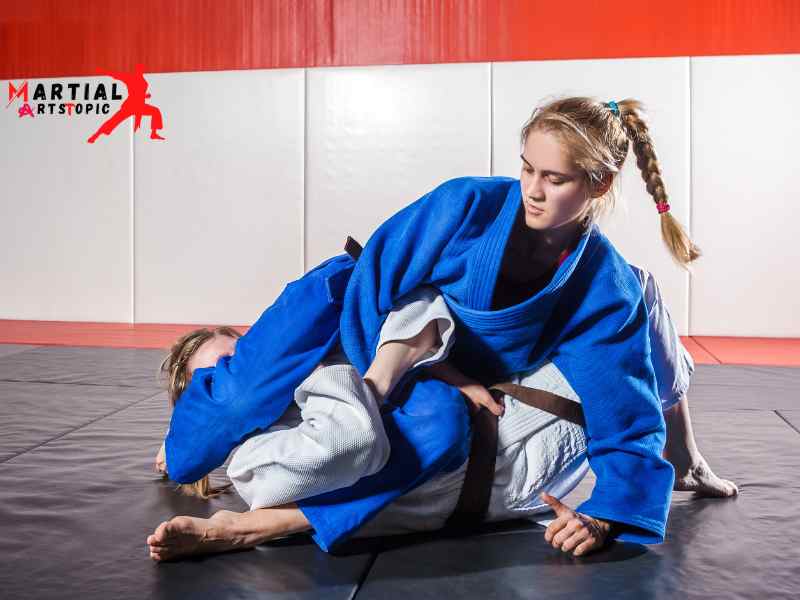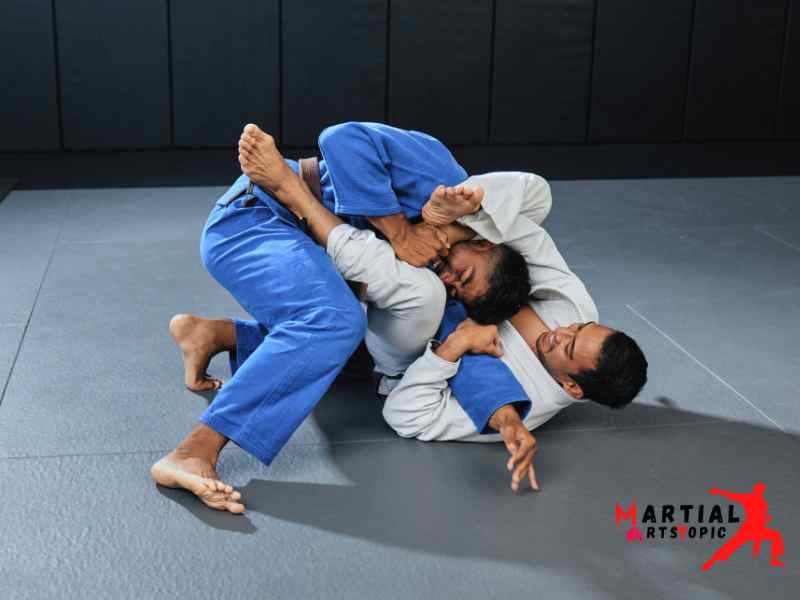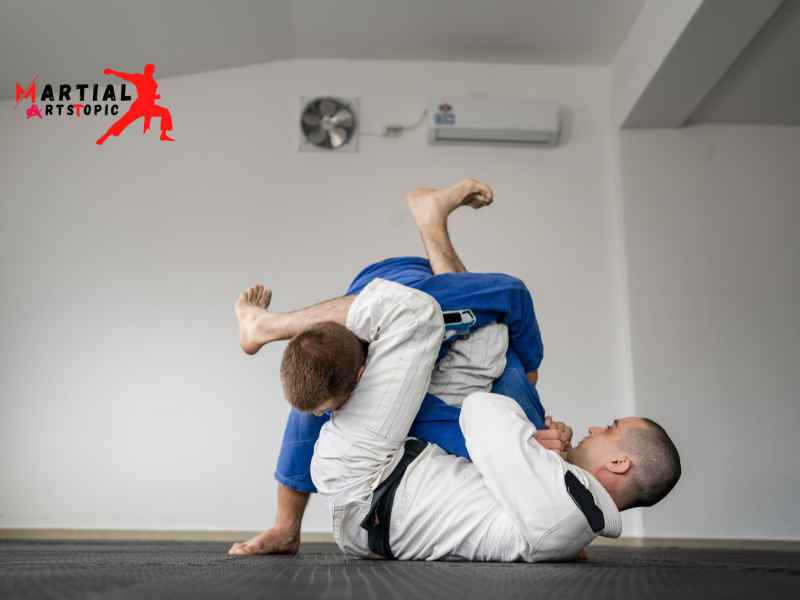
The History and Origins of Submission Grappling
The History and Origins of Submission Grappling submission grappling, also known as submission wrestling or simply grappling, is a martial art and combat sport that focuses on ground fighting and submission holds. It is a captivating discipline that has gained popularity worldwide, attracting both athletes and enthusiasts alike.
Origins Submission Grappling
We can trace the origins of submission grappling back to various ancient martial arts and combat systems. We can find one of the earliest forms of ground fighting in ancient Greece, where pankration, a combination of striking and grappling, was practiced. Pankration was a brutal sport that allowed competitors to use an array of techniques, including submission holds, to defeat their opponents.
In Japan, a similar ground fighting style called “newaza” was developed. Newaza, which translates to “ground technique,” was an essential component of Jujutsu, an ancient Japanese martial art. Jujutsu practitioners sought to overcome larger opponents through the efficient use of leverage, joint locks, and chokes.
Modern Development

Something largely attributed the modern development of submission grappling to the emergence of Brazilian Jiu-Jitsu (BJJ). In the early 20th century, a Japanese judoka named Mitsuyo Maeda traveled to Brazil, where he taught his art to Carlos Gracie. Carlos, along with his brothers, adapted and refined the techniques, ultimately giving birth to BJJ.
The Gracie family, particularly Carlos’ younger brother Helio Gracie, played a significant role in the evolution of submission grappling. Helio, who was physically weaker than his opponents, focused on using leverage and technique to overcome larger and stronger opponents. This led to the development of a grappling style that emphasized submissions and positional dominance.
International Recognition
Submission grappling gained international recognition through the rise of the Ultimate Fighting Championship (UFC) in the 1990s. The early UFC events showcased a variety of martial arts styles, pitting practitioners from different disciplines against each other. It became evident that fighters with a strong grappling background, especially those versed in submission holds, had a significant advantage.
This realization sparked a worldwide interest in submission grappling, leading to the establishment of various organizations and competitions dedicated to the sport. The popularity of events like the Abu Dhabi Combat Club (ADCC) Submission Wrestling World Championship further solidified submission, grappling as a respected martial art.
Training Tips for Submission Grapplers
Training Tips for Submission Grapplers: Elevate Your Skills to Dominate the Mat If you are a submission grappler, you understand the importance of mastering the art of grappling and achieving success on the mat. Whether you’re a beginner, looking to learn the ropes or an experienced practitioner aiming to take your skills to the next level,
- Develop a Strong Foundation: Building a firm foundation is essential for any grappler. Focus on learning fundamental techniques such as takedowns, sweeps, and submissions. These core skills will serve as the building blocks for your success in submission grappling. Practice them consistently and strive to perfect your execution.
- Train Regularly: Consistency is key for training. Make it a habit to train regularly, ideally three to five times a week. Regular training will help you improve your conditioning, build muscle memory, and refine your techniques. Remember, practice makes perfect.
- Focus on Strength and Conditioning: Submission grappling requires a high level of physical fitness. Incorporate strength and conditioning exercises into your training routine to improve your overall athleticism. Work on developing core strength, explosive power, and endurance. This will not only enhance your grappling abilities but also reduce the risk of injuries.
- Study and Analyze Techniques: Take the time to study and analyze different grappling techniques. Watch instructional videos, attend seminars, and observe high-level grapplers in action. Pay attention to details and understand the mechanics behind each move. This will enable you to apply techniques effectively and counter your opponents’ moves more efficiently.
- Drill, Drill, Drill: Repetition is the key to mastery. Set aside dedicated drilling sessions where you focus on specific techniques or sequences. By drilling regularly, you will develop muscle memory, improve your timing, and refine your execution. Incorporate both solo and partner drills into your training routine for maximum benefit.
- Spar with a Variety of Training Partners: Grappling with different training partners of varying skill levels and body types will expose you to different challenges and help you develop a well-rounded game. Spar with both larger and smaller opponents to learn how to adapt your techniques to different body types. This will enhance your ability to handle any situation that arises during a match.
- Develop a Game Plan: Having a game plan is crucial in submission grappling. Analyze your strengths and weaknesses, and identify the techniques that work best for you. Create a strategy based on your style and preferences. However, remain adaptable to ensure you can adjust your game plan when facing different opponents and situations.
- Take Care of Your Body: Submission grappling can be physically demanding, so it’s essential to take care of your body. Incorporate proper warm-up and cool-down routines into your training sessions. Stretch regularly to improve flexibility and prevent injuries. Additionally, prioritize rest and recovery to allow your body to heal and rejuvenate.
- Compete Regularly: Competition is a great way to test your skills and gauge your progress as a submission grappler. Participate in local tournaments and challenge yourself to step outside your comfort zone. Competing will help you fine-tune your techniques, develop mental toughness, and expose any areas that need improvement.
- Stay Patient and Persistent: Remember, becoming a skilled submission grappler takes time and dedication. Stay patient with your progress and keep working hard. Embrace both the wins and losses as learning opportunities and never give up on your journey to becoming the best grappler you can be.
The Benefits of Submission Grappling for Self-Defense

The Benefits of Submission Grappling for Self-Defense When it comes to self-defense, there are various martial arts and combat sports that can be beneficial. One such discipline that has gained significant popularity in recent years is submission grappling. Submission grappling, sometimes referred to as Brazilian Jiu-Jitsu or simply BJJ, is a martial art and combat sport that focuses on ground fighting and submission holds.
- Effective in Real-Life Situations: Submission grappling is designed to be effective in real-life self-defense situations. Unlike some martial arts that rely on strikes and kicks, submission grappling emphasizes ground fighting and grappling techniques. This makes it highly effective in close-quarters combat scenarios where the fight may end up on the ground.
- Utilizes Leverage and Technique: Submission grappling is all about leveraging your opponent’s body positioning and using proper techniques to gain an advantage. This means that even if you are smaller or weaker than your opponent, you can still defend yourself effectively by using leverage and technique. This makes it a great self-defense option for individuals of all sizes and strengths.
- Builds Confidence: Learning submission grappling and gaining proficiency in the techniques can significantly boost your confidence levels. Knowing that you have the skills to defend yourself in a real-life situation can give you a sense of empowerment and self-assurance. This newfound confidence can positively affect various aspects of your life, not just self-defense situations.
- Teaches Self-Control and Discipline: Submission grappling is not just about physical techniques; it also teaches self-control and discipline. In order to effectively execute the techniques, you need to remain calm and composed. This mental aspect of the training can help you develop self-control and discipline, which are important traits in self-defense situations.
- Improves Physical Fitness: Submission grappling is a physically demanding sport that requires strength, flexibility, and endurance. Regular training can help improve your overall physical fitness levels. You will develop core strength, muscular endurance, and cardiovascular fitness through the rigorous training sessions. This increased physical fitness can also contribute to your ability to defend yourself effectively.
- Enhances Problem-Solving Skills: they often described Submission grappling as a physical chess match. It requires you to think strategically and solve problems on the fly. As you train and spar with different opponents, you will learn to analyze their movements, anticipate their next moves, and adapt your techniques accordingly. This enhances your problem-solving skills, which can be applied not just in self-defense situations, but also in other areas of life.
Top 10 Submission Grappling Techniques Every Grappler Should Know
Top 10 Submission Grappling Techniques Every Grappler Should Know submission grappling is a dynamic and intense combat sport that requires a combination of technique, strategy, and physical prowess. Whether you are a seasoned grappler or just starting out, having a solid arsenal of submission grappling techniques is essential to succeed in this challenging discipline.
- Rear Naked Choke: The Rear Naked Choke is one of the most effective and widely used submission holds in submission grappling. It involves wrapping your arms around your opponent’s neck from the back and applying pressure to cut off their blood flow, forcing them to submit or lose consciousness.
- Triangle Choke: The Triangle Choke is a versatile technique that can be executed from various positions. It involves trapping your opponent’s head and arm between your legs while using your leg and hip muscles to apply pressure to their neck, forcing them to tap out.
- Armbar: The Armbar is a classic submission technique that targets the elbow joint. By immobilizing your opponent’s arm and applying leverage against their joint, you can hyperextend their arm, causing immense pain and forcing them to submit.
- Kimura Lock: The Kimura Lock is a highly effective technique that focuses on manipulating your opponent’s shoulder joint. By securing their arm behind their back and applying pressure, you can force them to submit or risk a serious injury.
- Guillotine Choke: The Guillotine Choke is a powerful technique that can be executed from various positions, including standing and on the ground. It involves trapping your opponent’s head and applying pressure to their neck, cutting off their air supply and forcing them to tap out.
- Ankle Lock: The Ankle Lock targets the ankle joint and is often used to finish fights or gain a dominant position. By applying pressure to your opponent’s ankle using your own body weight, you can cause extreme pain and force them to submit.
- Kneebar: The Kneebar is a joint lock that focuses on hyper-extending your opponent’s knee joint. By controlling your opponent’s leg and applying pressure against their knee, you can cause excruciating pain and force them to submit.
- Omoplata: The Omoplata is a versatile submission technique that targets your opponent’s shoulder joint. By trapping your opponent’s arm between your legs and applying pressure, you can force them to submit or risk a shoulder injury.
- Guillotine Choke: The Guillotine Choke is a powerful technique that can be executed from various positions, including standing and on the ground. It involves trapping your opponent’s head and applying pressure to their neck, cutting off their air supply and forcing them to tap out.
- Gogoplata: The Gogoplata is an unorthodox submission technique that involves using your shin or foot to apply pressure on your opponent’s neck from a guard position. It requires flexibility and precision to execute properly, but when done correctly, it can lead to a quick submission.
Submission Grappling vs Brazilian Jiu-Jitsu: What’s the Difference?
Submission Grappling vs. Brazilian Jiu-Jitsu: What Sets Them Apart?When it comes to the world of martial arts, there are many disciplines to choose from. Two popular styles that often get confused with each other are Submission Grappling and Brazilian Jiu-Jitsu (BJJ). While both styles share similarities, they also have distinct differences that set them apart.

Submission grappling is a term often used to describe a type of combat sport that focuses on grappling techniques, with the ultimate goal being to submit or immobilize an opponent. It encompasses a wide range of techniques from various martial arts, including wrestling, judo and, of course, Brazilian Jiu-Jitsu. The emphasis in submission grappling is on applying joint locks and chokes to force an opponent to submit.
On the other hand, Brazilian Jiu-Jitsu is a specific martial art that originates from Japan but has gained popularity and refinement in Brazil. BJJ focuses on ground fighting and submission holds. It is a self-defense system that allows a smaller individual to overcome a larger opponent through proper technique, leverage, and positional control. Brazilian Jiu-Jitsu practitioners are known for their ability to control and submit opponents using a combination of joint locks and chokes.
While both Submission Grappling and BJJ emphasize grappling and submission techniques, there are several key differences between the two.
- Ruleset: Submission Grappling tournaments often have a broader Rule set compared to Brazilian Jiu-Jitsu competitions. In Submission Grappling, competitors may be allowed to use techniques such as leg locks and neck cranks that are restricted in certain BJJ tournaments. BJJ competitions, on the other hand, follow a more standardized set of rules that prioritize positional control and submission finishes.
- Gi vs. No-Gi: One of the most notable differences between Submission Grappling and Brazilian Jiu-Jitsu is the attire. Someone traditionally practiced BJJ with a gi, a traditional uniform consisting of a jacket and pants, while Submission Grappling is typically practiced without the gi, known as “no-gi” grappling. The gi provide additional grips and handles for control, while no-gi grappling relies more on clinching and body control.
- Emphasis on Self-Defense: While both styles have roots in self-defense, Brazilian Jiu-Jitsu places a stronger emphasis on practical self-defense techniques. BJJ training often includes scenarios and techniques specifically designed for real-life situations, allowing practitioners to defend themselves effectively in various encounters. Submission Grappling, on the other hand, is more focused on the sport aspect, with less emphasis on self-defense scenarios.
- Competition Focus: While both styles have competitive aspects, Brazilian Jiu-Jitsu has a more established competitive scene with tournaments held worldwide. BJJ competitions follow a belt system, with practitioners earning progressively higher ranks based on their skill level. Submission Grappling tournaments are often open to practitioners from various grappling backgrounds, allowing for a wider range of techniques and approaches.
Conclusion
Submission grappling is a highly dynamic and challenging martial art that focuses on the art of submission holds and ground fighting techniques. It offers a unique combination of physical strength, technical skill, and mental strategy. Through its emphasis on leverage, technique, and control, submission grappling provides practitioners with the ability to defend themselves effectively in real-life situations. Additionally, it promotes discipline, self-confidence, and physical fitness. Whether you are a beginner or an experienced martial artist, a submission grappling offers endless opportunities for growth and personal development. So, if you are looking for a martial art that tests your limits and pushes you both mentally and physically, submission grappling is definitely worth exploring. Start your journey today and experience the power and effectiveness of this incredible martial art.
